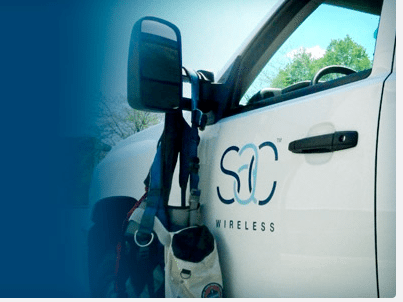It’s been less than a year since SAC Wireless became part of Nokia, and the company has already executed its plan to expand its network services footprint with Nokia behind it. Illinois-based SAC now serves carrier customers on both coasts and in many markets in between. Within the last three months, SAC said it has opened a Miami office and has expanded its operations in Atlanta, New York and Chicago, as well as Ohio, Michigan and Minnesota.
“Over the last 90 to 120 days I think we have hired a couple hundred more people,” said SAC CEO Bill Koziel. SAC has benefitted from a hiring slowdown across much of the infrastructure services industry, adding new talent as its competitors were forced to cut back. For SAC, the slowdown in construction activity has meant a focus on site acquisition work as the company prepares for future projects.
“There are not as many builds as there have been in the past, so we are pulling permits,” said Koziel, adding that he expects construction and network infrastructure services to represent a larger share of the company’s business during the second half of the year. He said that right now his business is about half site acquisition work and half construction-related activity.
Network densification is a big part of SAC’s business, but here the company performs very little site acquisition work. “The carrier or neutral host provider secures the site,” said Koziel. “We do a lot of the engineering, design it and take the site through permit.” SAC often continues into the deployment phase of a DAS or small cell project.
Relationship with Nokia
SAC Wireless is now a wholly owned subsidiary of Nokia, but continues to perform work for other equipment makers, including Ericsson, Alcatel-Lucent, Huawei and Samsung. When carriers purchase base stations from these suppliers they often contract with the manufacturer to deploy the equipment, and the manufacturer will turn to a services specialist like SAC.
“We are happy to work with them,” said Koziel, adding that Nokia also works with SAC’s competitors. “Obviously Nokia has a tremendous footprint and we don’t cover all of it, nor do we intend to,” he said. “Nokia works with a great number of our competitors, potentially all of them. I don’t see that changing. … We’re very supportive of the relationships that they have and we actually try to help improve those relationships with their partners.”
But as carriers deploy new equipment, SAC has a distinct advantage through its relationship with Nokia. Tower crews and electrical technicians are now able to work directly with Nokia’s engineers to learn how to deploy equipment.
“We have made changes to how we train and certify folks,” said Koziel. “We’re able to implement things from an OEM perspective. … Being part of Nokia obviously makes that much more accessible.”
Within the next year, SAC’s technicians could gain similar access to Alcatel-Lucent’s engineering expertise. Nokia is in the process of acquiring Alcatel-Lucent in a $16.5 billion deal that is currently under review by governments around the world. Last month, the U.S. Department of Justice signaled that the deal is not likely to be contested in the United States.
Follow me on Twitter.

